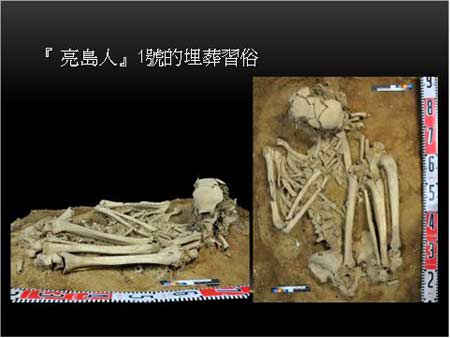
Lienchiang County Magistrate Yang Sui-sheng and Chen Chung-yu, a research fellow at Taiwan's Academia Sinica, unveiled their research findings at a press conference in Taipei. Chen had led an archaeological research team, which had discovered the remains.
According to DNA biochemistry analysis, the skeleton of the "Liang Islander" is related to the Austronesian language family, which had widely dispersed throughout the islands of Southeast Asia and the Pacific, including Taiwan and the Philippines, Chen pointed out.
Chen added that it is believed that Liang Island, situated 30 kilometers off China's southeastern Fujian province, was one of the locations where the ancient Austronesian people lived.
Liang Island is part of the Taiwan-controlled Matsu Islands administered by Lienchiang County.
The archeological team had discovered a skeleton at a historic site on Liang Island in late 2011, which was proved to date back to as long as 8,200 years ago after undergoing scientific investigations and was named "Liang Islander No. 1."
In July of 2012, another skeleton named "Liang Islander No. 2" was discovered at the same site, which was believed to date back to as long as between 7,590 and 7,530 years ago.
As per the results of DNA tests conducted on finger bones of the human remains by several international institutions dedicated to human genome/gene analysis research, the southeastern coastal areas of Asia could have been the main residential place for the ancient Austronesian people.
The findings from Liang Island also provide new evidence that can be added to the understanding of the way of life of the ancestors of the Austronesians, and the spread of the population in the region and the origins of Austronesian languages.
Yang noted that Liang Islanders probably lived in China's southeastern coastal areas at the time. He assumed Liang Islanders went to the island for fishing and to reside on the island for a short period of time. The excavation of the remains marks an important discovery in the history of human migration.



Reader Comments
to our Newsletter